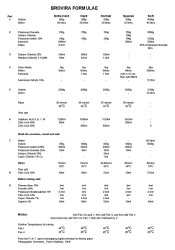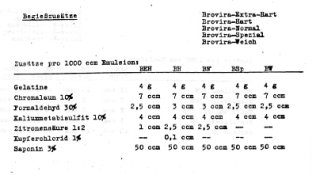Photo Engineer
Subscriber
While writing my new book, I have been reading a lot of old texts on the subject and reading material posted here on APUG - including my own. I maintain that EVERY published formula is filled with errors or intentional omission of information. This goes for the work of Eder, Wall and Baker as well as Glafkides.
When Grant Haist was writing his book, and I was helping with the editing, I didn't know much about emulsion making and later came to find out from him that the formula he put into his book was heavily redacted to preserve secrecy. But looking over earlier works I find the same thing time after time.
Recently, the BIOS data on Brovira paper was taken by one APUG member from a table in Glafkides and posted on APUG. First, the original table in Glafkides had data on previous pages that were left out of the table and the person who copied them either didn't know or care. It is very curious in that without that data, the emulsion can only be made in a limited contrast range without extensive emulsion knowledge. In addition, the table at the end of the formulas actually contains 7 rows but was copied with only 6 rows but with the amounts offset in an apparent random fashion which will result in a bad coating.
So, this is kind of a rant to tell people not to believe ANYTHING you read about emulsions. In keeping with this, I am doing an extensive examination of the formulas in my first book to try and weed out any error.
This is just a note to all of you trying to make emulsions. It is simple. I have seen literally hundreds of students making Silver Chloride, Silver Bromide and Silver Bromo-Iodide emulsions. It works the first time when you have all of the information in front of you. Evidence is that now, Mark and Nick at GEM are producing excellent plates and motion picture film and are soon going to make some sheet film.
I would like to add that Nick and I had to revise some elements of one of my emulsions due to changes in chemical supplies and methodology which changed the results rather profoundly.
So, I have to say that if you are having problems making emulsions, I am here to help. Just post the problem.
When Grant Haist was writing his book, and I was helping with the editing, I didn't know much about emulsion making and later came to find out from him that the formula he put into his book was heavily redacted to preserve secrecy. But looking over earlier works I find the same thing time after time.
Recently, the BIOS data on Brovira paper was taken by one APUG member from a table in Glafkides and posted on APUG. First, the original table in Glafkides had data on previous pages that were left out of the table and the person who copied them either didn't know or care. It is very curious in that without that data, the emulsion can only be made in a limited contrast range without extensive emulsion knowledge. In addition, the table at the end of the formulas actually contains 7 rows but was copied with only 6 rows but with the amounts offset in an apparent random fashion which will result in a bad coating.
So, this is kind of a rant to tell people not to believe ANYTHING you read about emulsions. In keeping with this, I am doing an extensive examination of the formulas in my first book to try and weed out any error.
This is just a note to all of you trying to make emulsions. It is simple. I have seen literally hundreds of students making Silver Chloride, Silver Bromide and Silver Bromo-Iodide emulsions. It works the first time when you have all of the information in front of you. Evidence is that now, Mark and Nick at GEM are producing excellent plates and motion picture film and are soon going to make some sheet film.
I would like to add that Nick and I had to revise some elements of one of my emulsions due to changes in chemical supplies and methodology which changed the results rather profoundly.
So, I have to say that if you are having problems making emulsions, I am here to help. Just post the problem.










 . Let's go where I think we agree: beginners should start with simple recipes, developed by, adapted by, or at least tested by contemporary handmade emulsion makers with modern materials.
. Let's go where I think we agree: beginners should start with simple recipes, developed by, adapted by, or at least tested by contemporary handmade emulsion makers with modern materials.

